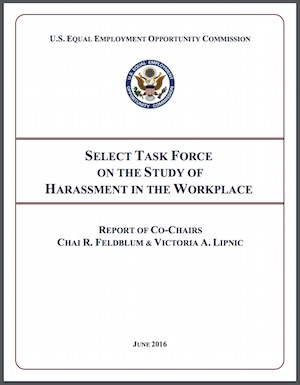
Employers should change their training programs aimed at preventing workplace harassment to focus on the culture and needs of their individual workplaces rather than on trying to avoid legal liability, according to a new report.
“Training needs to be part of a holistic, committed effort to combat harassment,” Victoria A. Lipnic of the Equal Employment Opportunity Commission told those attending a meeting Monday at which the report from the Select Task Force on the Study of Harassment in the Workplace was presented. Lipnic co-chaired the task force with fellow Commissioner Chai R. Feldblum.
Employers must do more than establish reporting and response systems, Lipnic said; employees also must be able to use the systems without worrying that they will experience retaliation.
Workplace civility and bystander intervention training are two options that employers could pursue, Feldman said. “Bystander intervention training can create a sense of collective responsibility on the part of workers and empower them to be engaged bystanders in preventing harassment,” she said. “With leadership support, bystander intervention training could be a game changer in the workplace.”
Almost one-third of the approximately 90,000 charges filed with EEOC in fiscal year 2015 included an allegation of harassment, according to the report authors. The document details risk factors for harassment, lists policies and procedures to reduce and eliminate harassment, and contains a toolkit of compliance assistance measures for employers.
Senior living is not immune to such accusations. In January, for instance, a former worker at a Portland, OR, senior living community filed a lawsuit claiming that her employment was wrongfully terminated in part because she complained after two nooses were found hanging in an employee break room.



